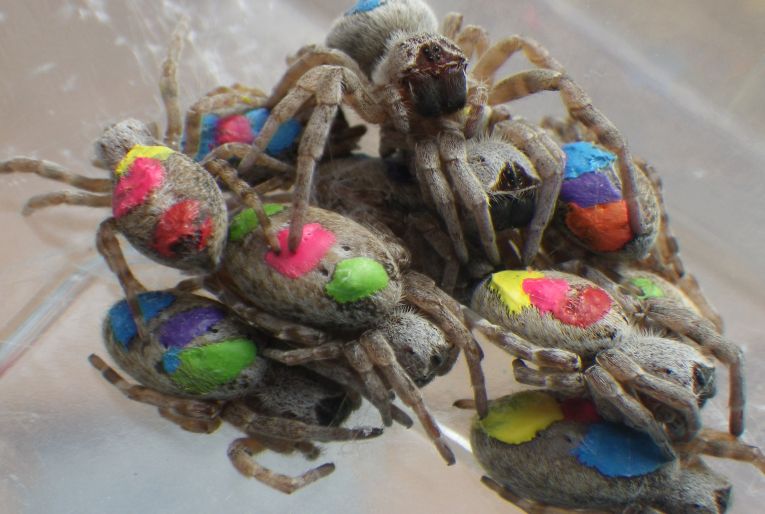We have mentioned social spiders in some amber once before in Cretacean murder mystery solved. But here is spiders' social personality in embryo, from an engrossing paper by Kate L. Laskowski and Jonathan N Pruitt of the Berlin Leibniz-Institute of Freshwater Ecology and Inland Fisheries and Pittsburgh University in the US. To function as a team, the spiders have adopted a simple but ant-like differentiation of labour.
A social niche specialisation is supposed to develop when a group interact repeatedly. This reduces competition and increases individual rewards in the social spider Stegodyphus mimosarum and other members of this genus. They tend to stick together on their webs and maintain groups with persistent social interactions.
The researchers studied spider response to a simulated predator and also prey attack response (to vibration). A boldness/shyness measure was devised using air jets from a 10cm distance. This was meant to simulate a predatory bird's wing approaching. The predator response caused huddling, from which some individuals recovered quicker than others. The colour coding seen in the photograph ensured each individual could be identified. The speed with which an individual attacked when the vibration was sensed measured their boldness/shyness.
There were consistent differences in boldness and attack tendency. The most consistency was found for boldness, among colonies that had been together for at least 4 weeks. The social niche theory seems to hold up with animal boldness where the spiders had been closeted in a stable group. Many other animal species such as sticklebacks have tendencies to socialise in similar ways, so the next step may even stretch as far as primate evolution, to see how antisocial our own species has become.
The next step for this research would be to check how colonies performed when these social and consistent individuals were present. Meanwhile, this paper containing the research is in - the Proceedings of the Royal Society B.










